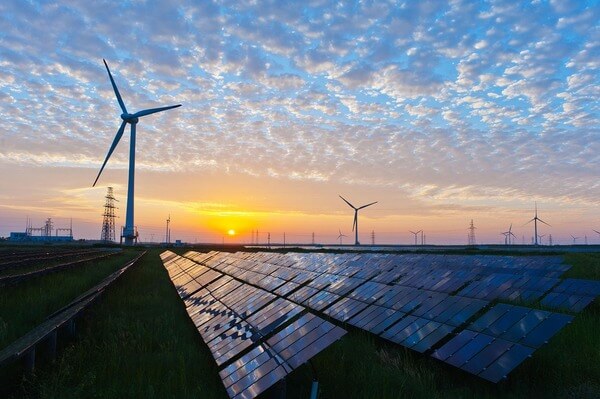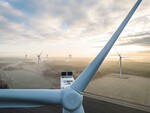News Release from windfair.net
Wind Industry Profile of
Energy transition as cost driver?
Climate activist Greta Thunberg found clear words for the world climate summit: More than "blah blah blah" did not come out of it. German Environment Minister Svenja Schulze wasn't quite as negative, but she, too, couldn't avoid criticizing the summit's lame decisions: "What we saw in the final phase in Glasgow was a last gasp of the old, fossil fuel world. Together with the island states and many others, I would of course have liked to see clearer statements on the coal phase-out. But I also understand that India crossed a threshold in Glasgow that this country had never crossed before."
German Development Minister Gerd Müller was even clearer: "It is true that COP26 announced many initiatives such as the end of fossil fuel subsidies, or global forest protection. But from the perspective of developing countries, which are hard hit by climate change, the pledges and measures are insufficient. The damage and consequences of climate change and urgently needed adaptation measures, the development of renewable energy structures are insufficiently supported. Bottom line is that the agreements are not binding enough. The many announcements made in Glasgow must be reflected in more ambitious national climate contributions (NDCs). Significant improvements must be made here in the coming years."
China and India in particular ensured that the final declaration fell far short of expectations. Both countries are still heavily dependent on polluting coal-fired power generation and pump huge amounts of CO2 into the environment every year. When asked about an ambitious timetable for the energy transition, both countries like to cite the high costs.

Existing technologies are sufficient, they just need to be used much more intensively, according to a new study (Image: Pixabay).
But is this still true? No, says a recent study from the German University of Mannheim. The research team from the Mannheim Institute for Sustainable Energy Studies (MISES) concludes that continuous improvements to currently available technologies should be enough to achieve targeted cost reductions in the coming - crucial - years. "In contrast, technology breakthroughs do not appear necessary. The reason for this positive outlook is that the costs of wind, solar and green hydrogen production have fallen faster in some cases over the past decade than previously thought," the researchers said.
"The energy transition is a mammoth task. But we can achieve many of our goals with existing technologies - provided we expand these technologies quickly and widely," states study co-author Rebecca Meier.
As a method, the researchers relied on Theodore Paul Wright's well-known learning curve concept from 1936: The unit costs of a product often fall by a constant factor with each doubling of the cumulative number of units produced. This means that "each unit of clean energy source installed provides learning experiences that lead to cost reductions for the technology, which in turn lead to further expansion. Such cycles drive the pace of the energy transition decisively. However, they must be triggered by initial investments and must not subsequently be slowed down by contrary political measures," summarizes Prof. Dr. Gunther Glenk.
So global world trade actually makes it easier for countries like India and China, because it ensures that prices fall more quickly. The best example of how this mechanism works is the offshore wind industry: initially denounced as far too expensive and therefore unfeasible, costs have fallen many times over in the past ten years and still do as more and more offshore wind farms have been installed all around the world. The same path is currently being taken by the technology of floating turbines which are expected to make a triumphant global advance in the coming years, bringing offshore wind to countries that have not yet been able to build wind farms due to unfavorable ground conditions.
So there are no longer any economic excuses for implementing the energy transition quickly.
- Author:
- Katrin Radtke
- Email:
- presse@windmesse.de
- Keywords:
- COP26, energy transition, wind, offshore, solar, climate change, technology, study, University of Mannheim, costs, cost driver, installation, floating


























